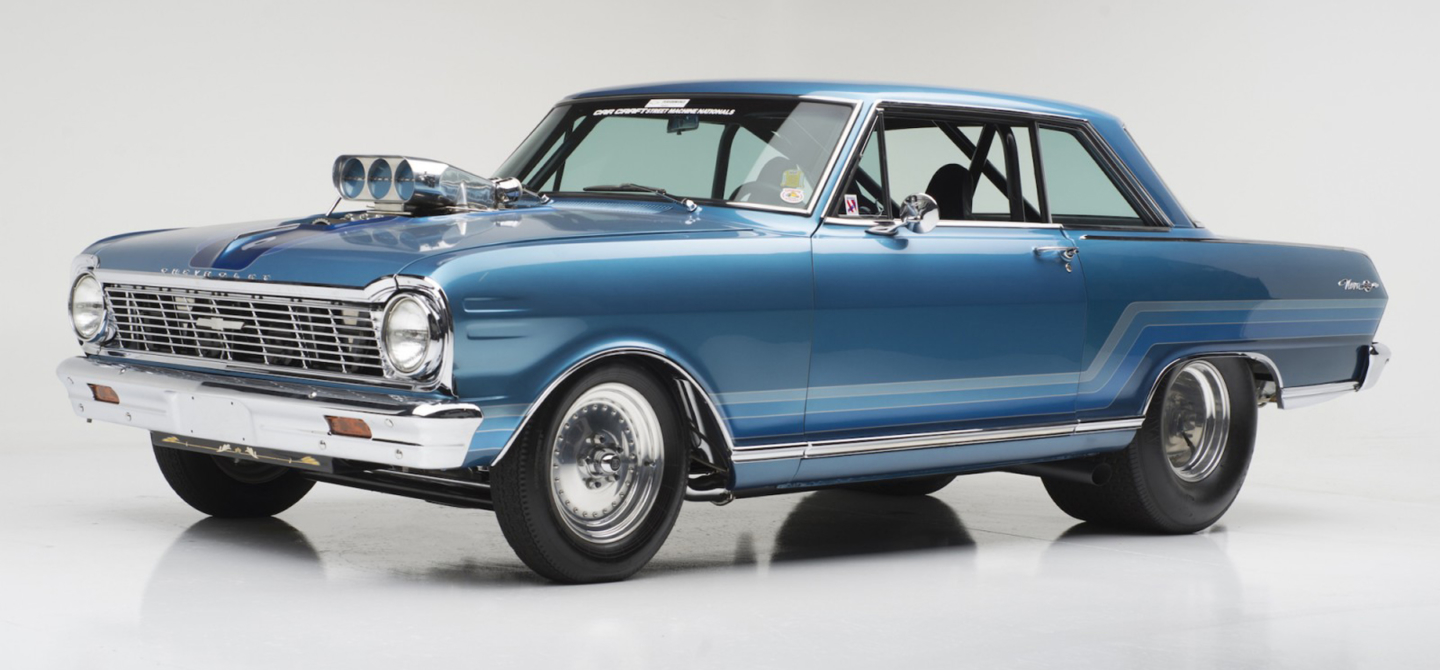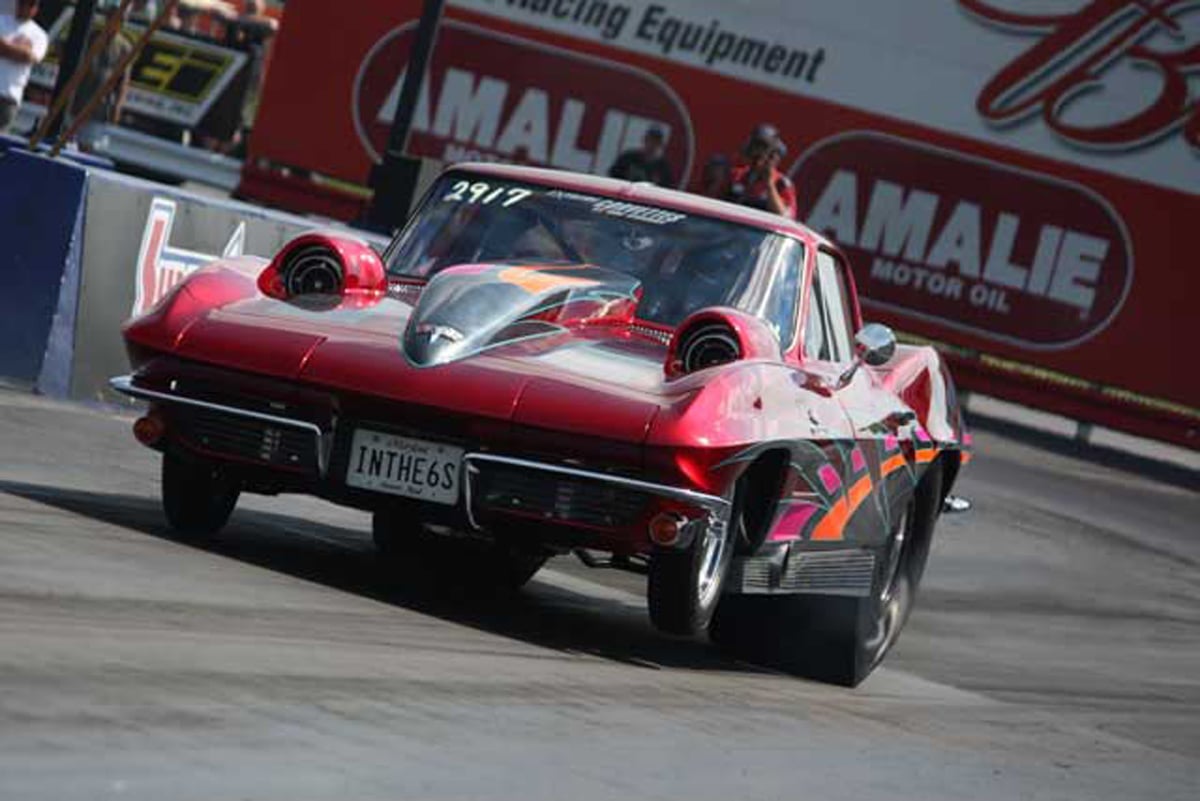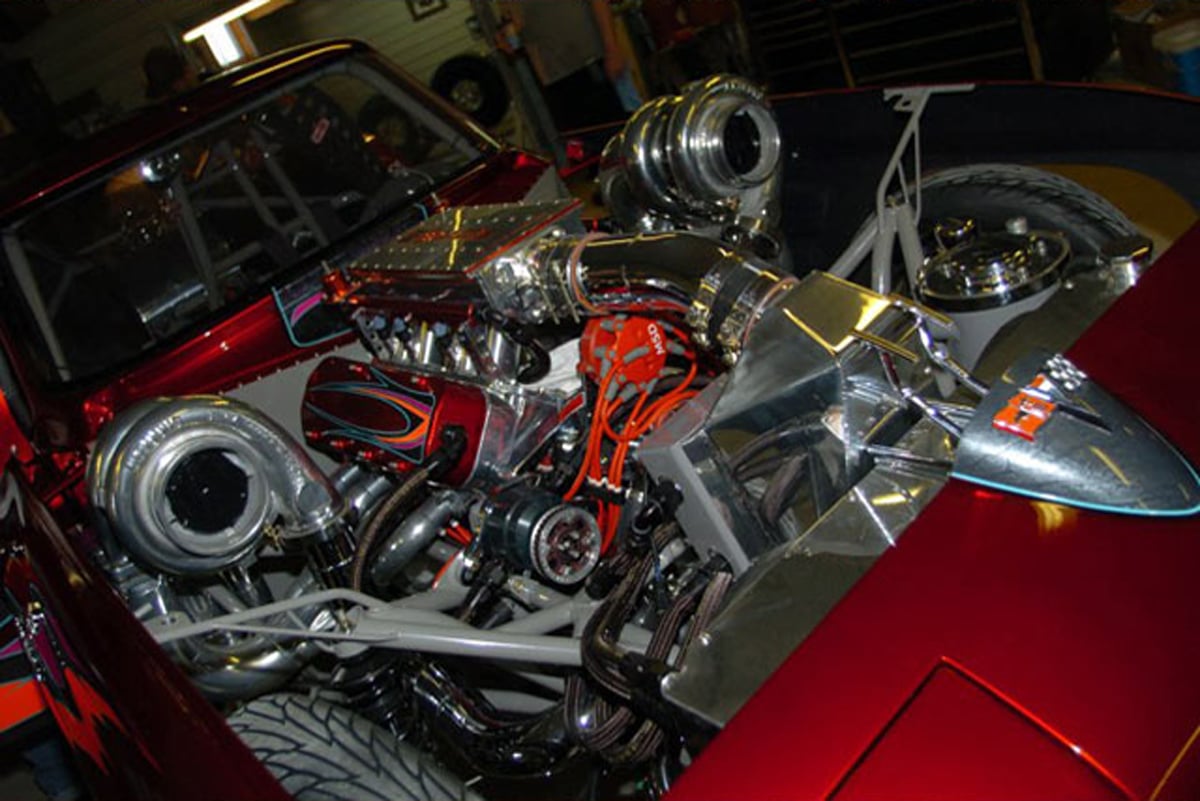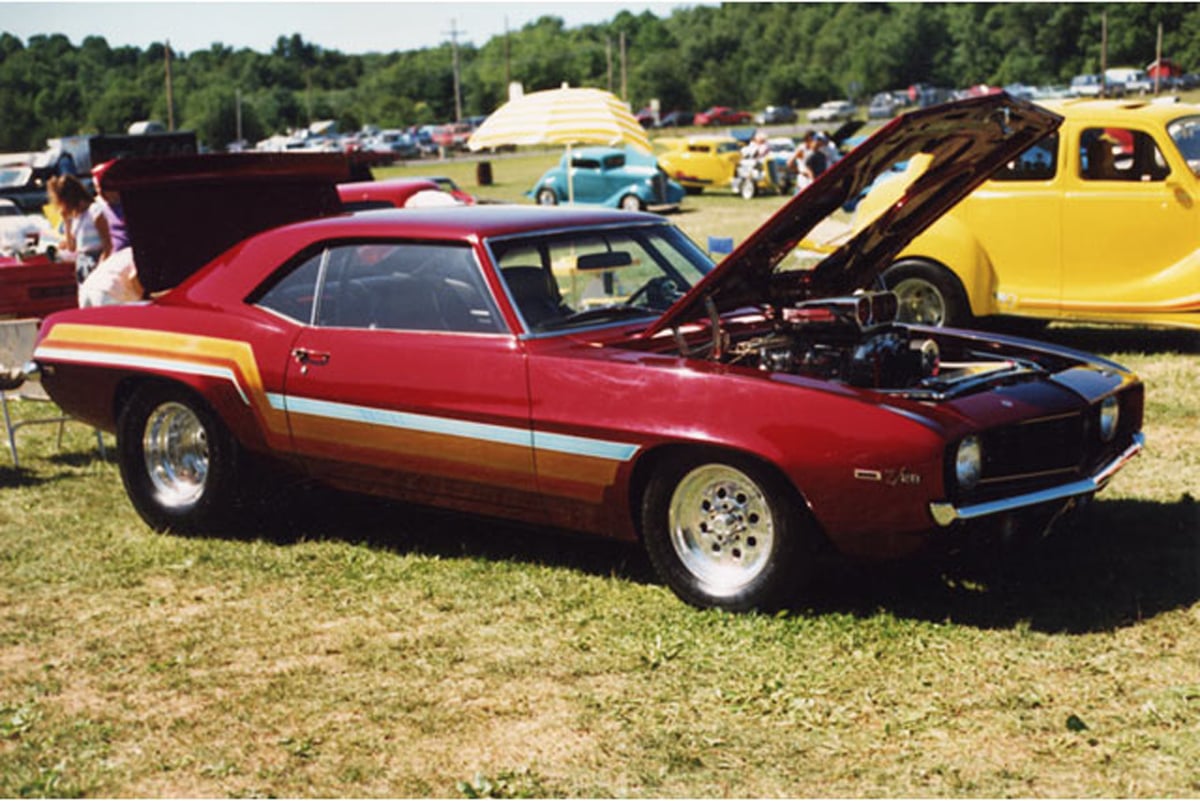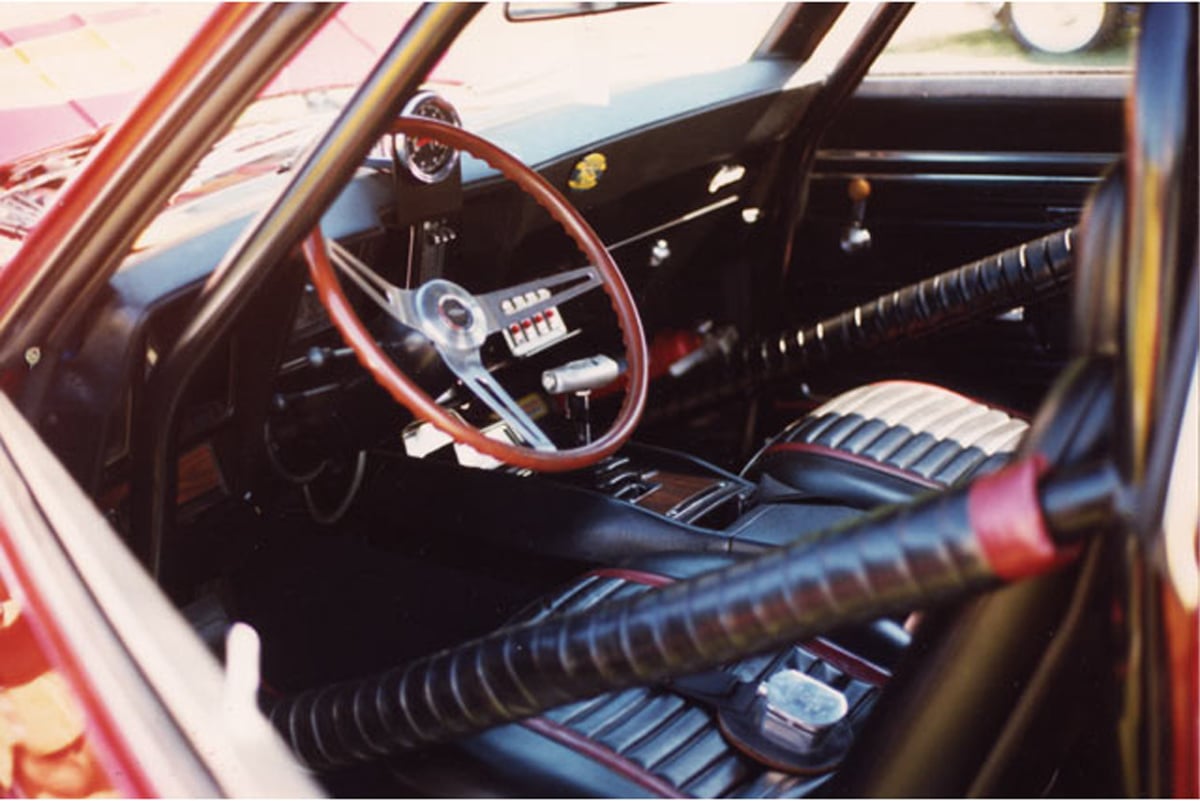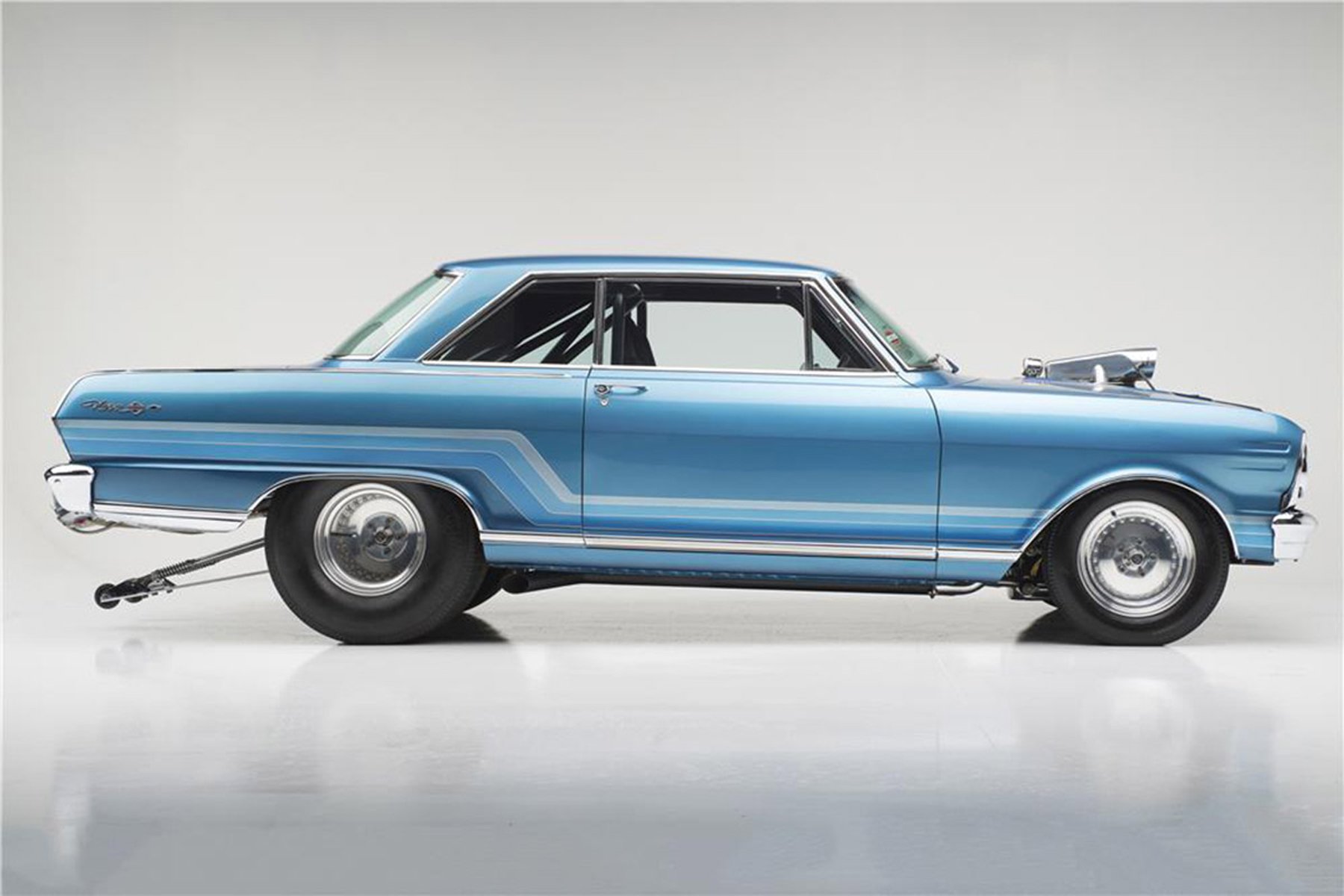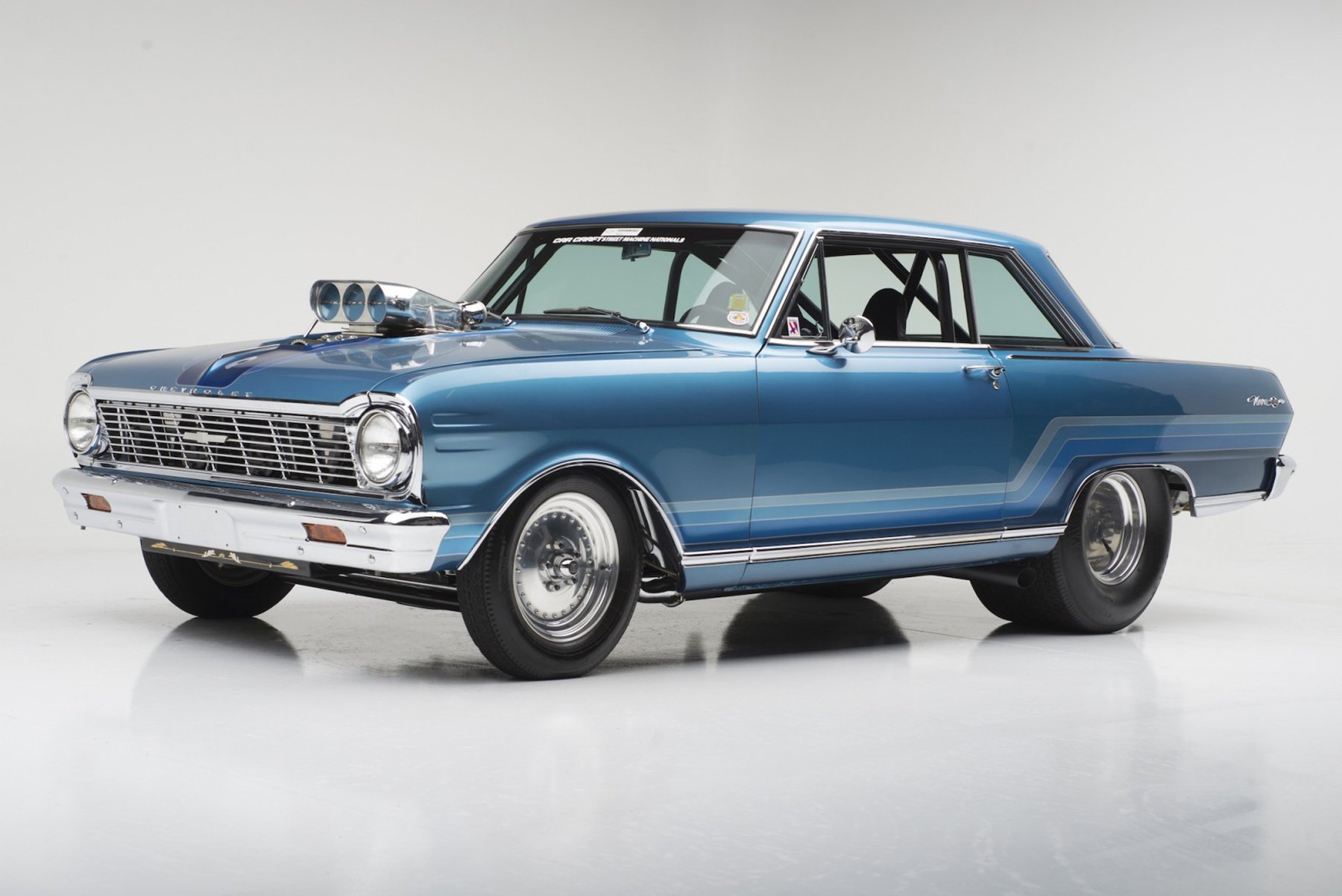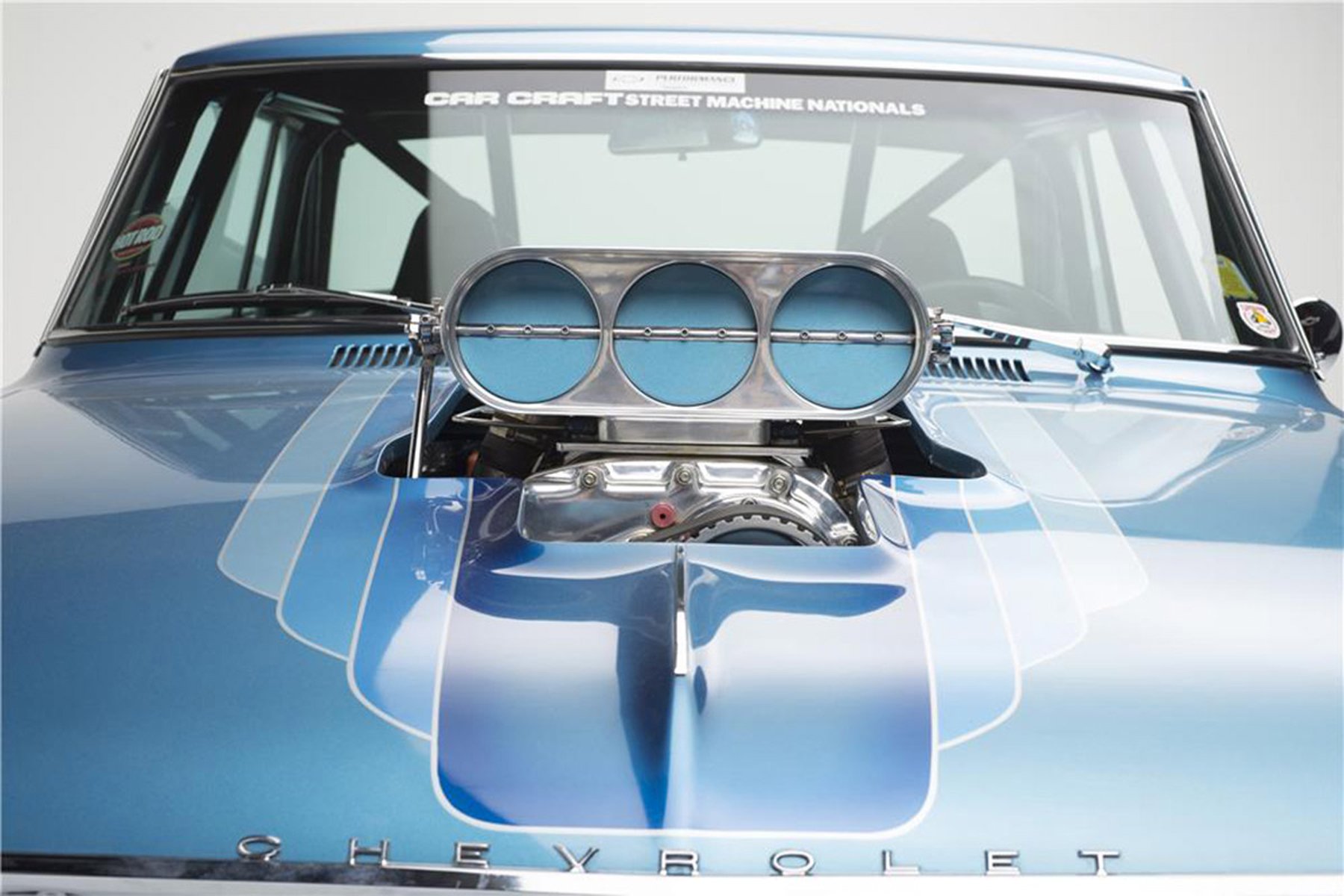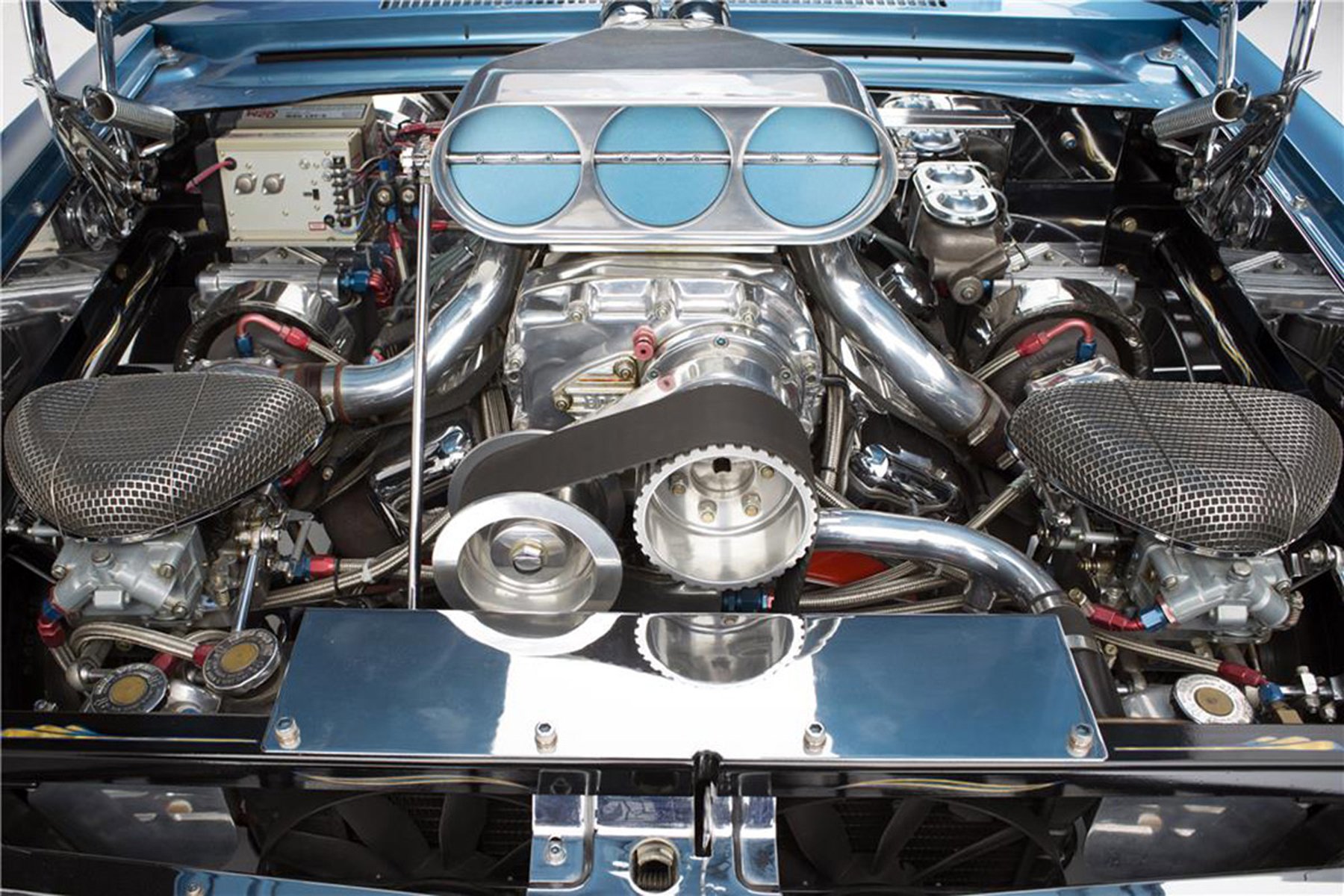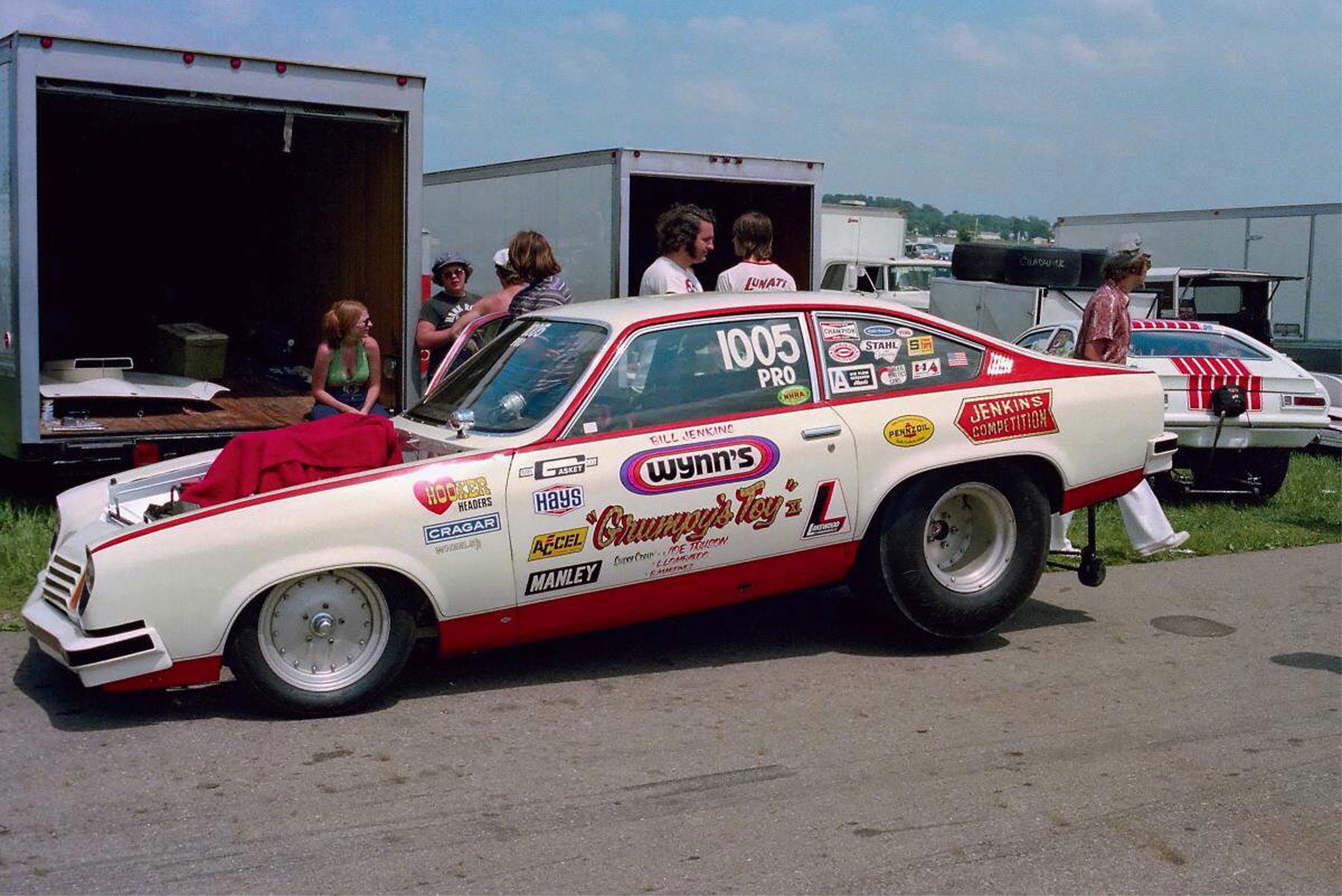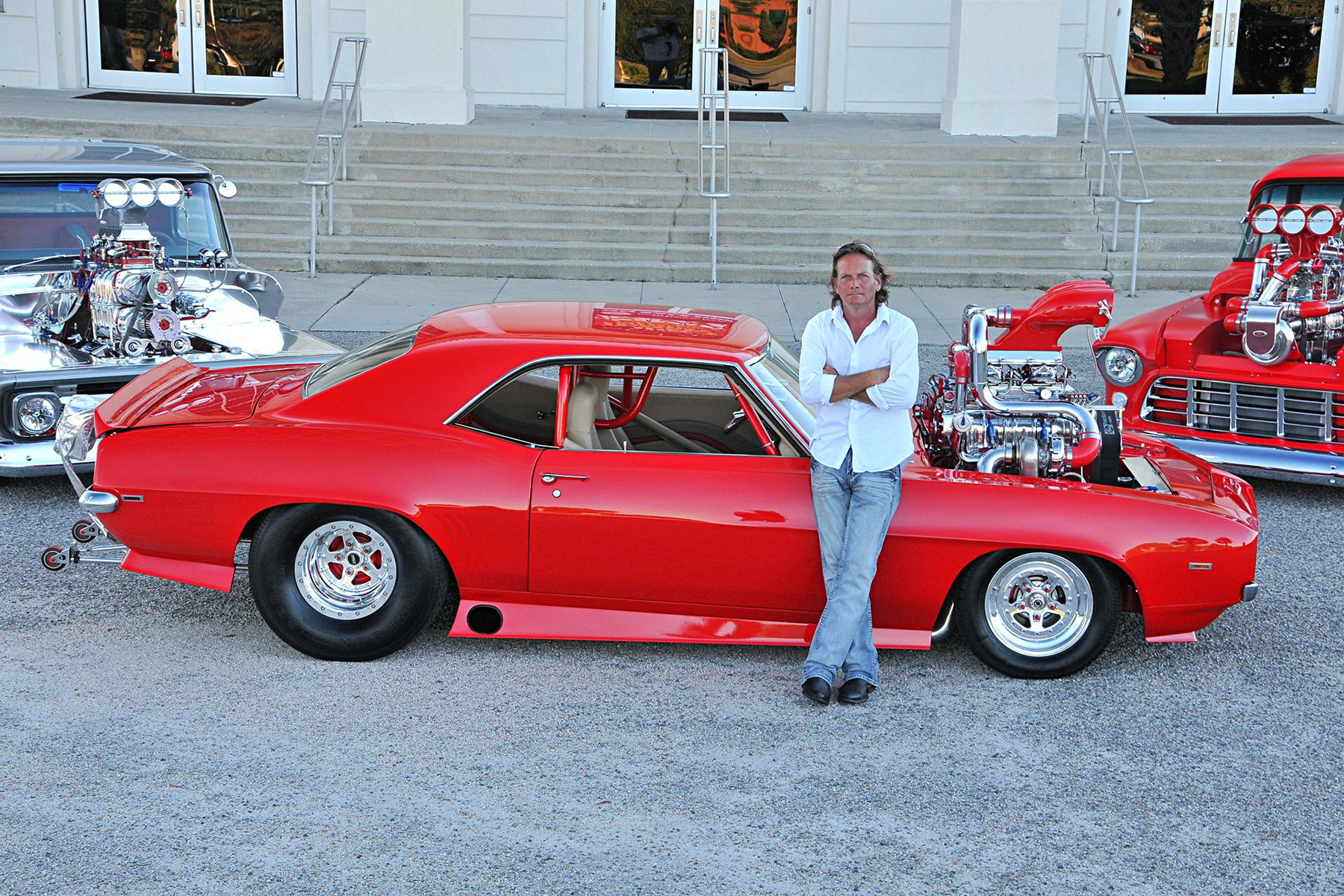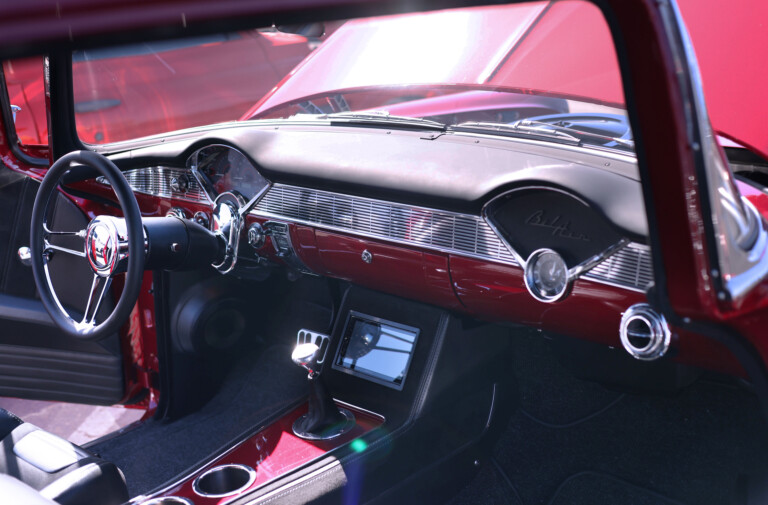They say that imitation is the most sincere form of flattery, and if that’s true, then it says something about our love for drag racing – specifically the Pro Stock class. Long before there was Pro Touring and Street Outlaws, there was a style that emulated the cars we grew up with on the dragstrips across America. And when you trace that trend down to more than four decades ago, you’ll find a Chevrolet at nearly every pivotal point. That style is Pro Street.
If you're wondering, yes - the license plate is not only accurate, but it's real. Rod Saboury is well known for his slew of Pro Street machines. They go back to the beginning: the 1970s.
Pro Street began as a way to turn a drag car into a street driven beast, and it typically includes not only the look of the drag racer, but often times, the performance as well. With huge meats stuffed up under the quarter-panels and pizza cutters up front, Pro Street cars looked just like their dragstrip counterparts. But there were a couple things present on Pro Street cars that most Pro Stock cars didn’t have: full interiors and a license plate.
Pro Street cars have the same look, they have the big engines – typically with a tunnel ram or a roots-type blower sticking through the hood – and they look like they’re poised to pounce on any and all comers. They sometimes had rollcages, often had wild paint jobs, and they included your Christmas wish list of performance parts from all of the top manufacturers like Edelbrock, Holley, Hedman, and many others.
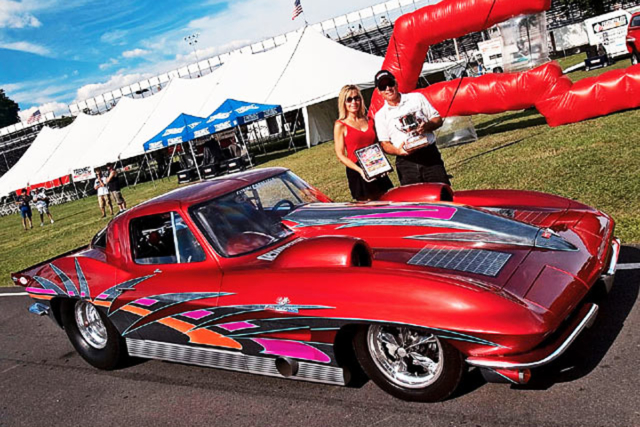
Rod Saboury’s six-second Corvette is the epitome of the current Pro Street trend. It has the big tires, the big power, and it has what most street cars have: an interior and a license plate.
What Is Pro Street?
If you ask just about anyone who grew up in the 1970s and 1980s about Pro Street, they’ll tell you about their favorite Pro Street car. While we’re seeing insane 1,000 horsepower builds today, it wasn’t really like that with Pro Street in the 1980s, when the style really began to take shape.
During those decades, to have a street car with over 600 horsepower was pretty intense, and it often made the car difficult to drive. But that was the appeal of the Pro Street car: it was more than just a musclecar, it was a drag car that you could legally drive on the street. It was about the look, horsepower was a welcomed by-product.
Today, you can’t turn around without seeing a car with a flashy engine and excessive boost, but Pro Street was different. It was about making power and using all of it, and the cars always got the nod “that thing can’t be street legal” from a very approving audience. The concept that too much power is not enough very likely began with Pro Street cars.
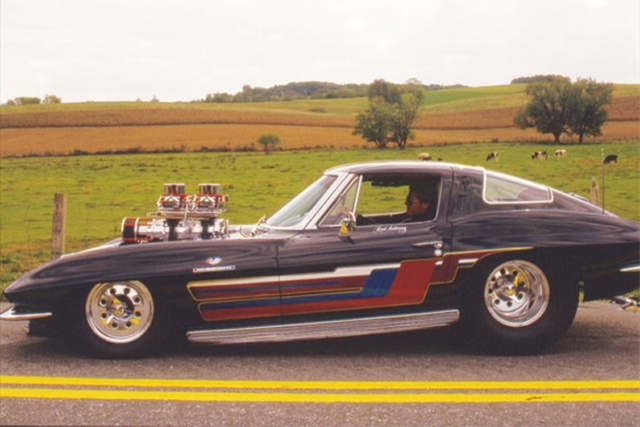
Unlike many hot rods and musclecars of the era, the Pro Street ride didn’t have the rake that a jacked up hot rod had. The rear tires were huge, but they were tucked inside the quarter-panel, just like the funny cars.
The cars had huge rear tires that were tucked into tubbed rear bodies, smaller front tires, and inside the cockpit was a virtual office of horsepower. Your frontal view was likely obstructed, and the cars did not ride like a Cadillac. Nobody really worried about how these cars handled on long trips, because they usually didn’t have much of a range with the single-digit fuel mileage they achieved.
One car owner in the early 1980s in San Mateo, California, area drove his methanol-burning blown big-block Pro Streeter around with a chase truck to carry the extra fuel he needed for cruising. The car was loud and announced its presence long before you could see it; it turned heads so quick some of us had whiplash.
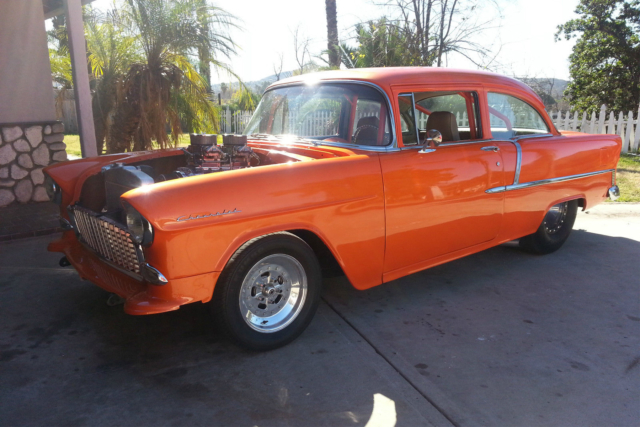
Until Pro Street made the scene, cars like this Tri-Five didn’t wear steamrollers in the rear – there wasn’t room. Pro Street meant tubbing the car, narrowing the rearend, and stuffing the car with the biggest rear tire you could fit.
We asked him how much fuel he was using for his 30-mile loop, and he simply pointed to the chase truck with three 15-gallon fuel cans. “See those cans,” he told us, “I use up all of them, including my 15 gallon fuel cell.” If you’re doing the math properly, that’s roughly two gallons per mile.
It was almost a badge of honor back then to get horrible fuel economy, it meant you had a very thirsty and powerful engine. We didn’t really care about fuel economy; it didn’t hurt that fuel cost considerably less back then, either. We were just getting into three digit prices for fuel in the 1980s, so it was still affordable to fill the tank, which was usually a fuel cell mounted in the trunk.
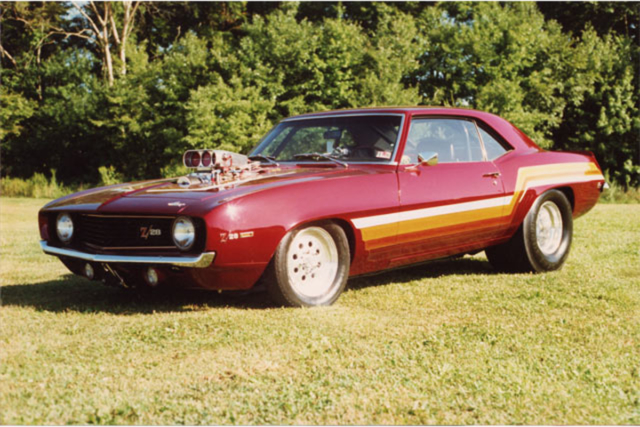
Rod Saboury bought this 1969 Camaro Z/28 brand new, and then took it drag racing. Later, after retiring the car for a couple years, he brought it back to life as a Pro Street machine and won Grand Champion.
The Pro Street Movement Across America
But where did this all begin. Who started this craze that’s lasted more than four decades and still makes our hearts race with joy when we see them? Much of that depends on who you talk to, and what their favorite car was. There’s one thing for certain, when you look back on all of the significant cars we’re going to mention here, there’s a common theme: they’re all wearing the Bow Tie of Chevrolet.
One name that is synonymous with Pro Street is Rod Saboury. He’s been at this game since the 1970s, and after a successful run racing his 1969 Camaro Z/28, the car was retired shortly, before coming back as a Pro Street car. It won Grand Champion at the 1984 Street Machine Nationals. Rod has continued his trend of Pro Street entries with a slew of Corvettes, most notably is his Mike Moran-built small-block Chevy-powered 1963 Corvette. That’s a car that runs on the street with twin turbos spooling up 2,400 horsepower and pulling down six-second e.t.’s.
A blower, fat tires, wheelie bars, and an interior. Often times, the interior was the one component that kept you wondering if the car was actually driven; the interior was too nice in some of these cars.
If you look a couple years earlier to the 1982 Summer Nationals, another Chevy wowed the crowd and made everyone take notice. It was the first time anyone had really seen the use of forced induction used to excess on a street car. That Pro Street entry that won multiple awards, including Grand Champion, stopped everyone in their tracks. Some say that supercharged, twin-turbo 1965 Nova SS – InNOVAtion – built by Rick Dobbertin – was the first real Pro Street entry.
On the outside, it's just a big-block Nova with custom paint and wheelie bars. On the inside, it's got more power adders than any street car before it.
Rick was in the business of power adders, and used his own innovation to combine a pair of turbochargers and a BDS 6-71 supercharger – along with nitrous – to power his 454ci LS7. The turbos sat behind the headlight buckets, with a pair of Holley carburetors feeding the fuel.
Rick Dobbertin was in the business of power adders. He decided that he would build a car that utilized his craft - all of it. He showed up at the 1982 Summer Nats in his 1965 Nova - InNOVAtion - and stopped everyone in their tracks. Nobody had seen a pair of turbos feeding a 6-71 huffer before. Rick made it happen, and the world of hot rodding has never ceased to amaze us since.
Go back even further than the 1980s, and you might find another Bow Tie entry into the world of Pro Street – Scott Sullivan’s blown 1967 Nova. This car was definitely a stunner, and the Nova was one of the first Pro Street cars to break the mold and get into the books as a true Pro Street contender, winning Street Machine of the Year in 1979.
Scott went on to build a few more cars, one of them a notable contender for the street scene. It was a 1955 Chevy called Cheeze Whiz for it’s bright orange/yellow paint, and it was a street driven Pro Streeter that gained significant attention.
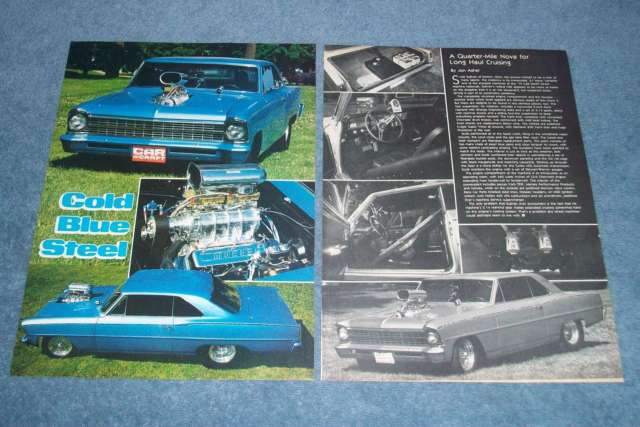
Some say the first real Pro Street car belonged to Scott Sullivan with his 1967 Nova. It was definitely one of the first, but was it the first?
Now go back to 1972, when some will tell you that Bill “Grumpy” Jenkins was the actual pioneer of the Pro Street push, even though he really didn’t have an entry for the scene. But how did he push a trend on the musclecar world without actually being a part of it? It was likely his 1972 Chevrolet Vega Pro Stock drag car with a full tube chassis and massive slicks tucked under the Vega’s tiny quarter-panels that created the hype. Back then, cars with big tires like that, tucked inside the quarter panels, were funny cars; they had flip bodies and weren’t even close to Grumpy’s Vega, which had working doors.
Does Pro Street go all the way back to one of Bill "Grumpy" Jenkins' toys - a 1972 Vega that ran Pro Stock with functional doors? Some say it does; everyone loved that little Vega with the fat tires stuffed up underneath. Where John Delorean failed with the Vega, Grumpy made it cool.
Where did Pro Street begin? Well, that all depends on where you were standing, and in which decade. But the one common thread that seems to stitch together the Pro Street movement into what it has become today – more than 40 years later – just so happens to be the Bow Tie. Whether you believe it was “Grumpy”, Scott, Rick, or Rod, they all did it in a Chevrolet.
Brad Gray is one of those guys who is obsessed with boost, and has an entire stable of vehicles with excessive boost. Is it too much? Not if you ask him.


